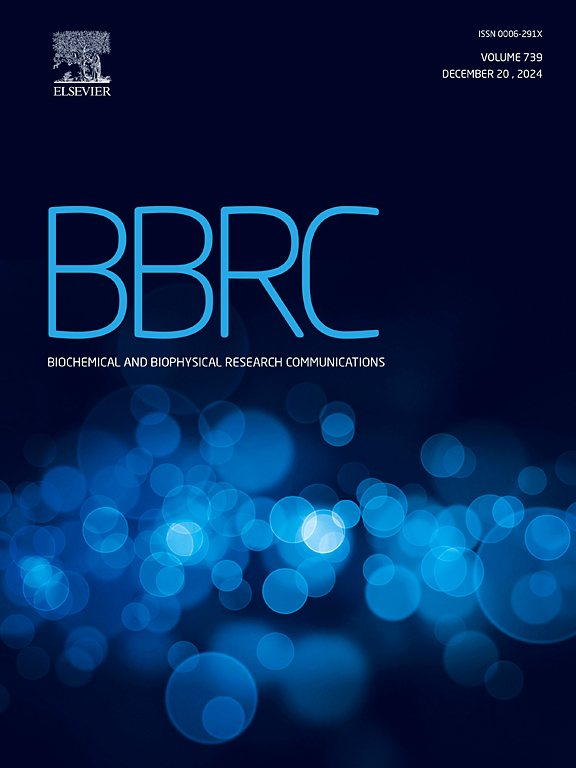Gene expression and characterization of an antimicrobial peptide from Medicago sativa “Sazova” cultivar
IF 2.5
3区 生物学
Q3 BIOCHEMISTRY & MOLECULAR BIOLOGY
Biochemical and biophysical research communications
Pub Date : 2025-03-11
DOI:10.1016/j.bbrc.2025.151617
引用次数: 0
Abstract
In recent years, the discovery of new antimicrobial agents has become necessary because of the increase in antibiotic resistance, the development of herbicides and fungicides resistance. Among the antimicrobial agents, antimicrobial peptides (AMPs) stand out due to their stable structure. In this study, the aim was to identify a thermostable AMP from the seeds of M. sativa “Sazova” cultivar and to analyze gene expression during germination. Antimicrobial tests were performed for the seed peptides after heat treatment (85 °C for 10 min), revealing antimicrobial effects against S. aureus, E. coli, and C. albicans. Subsequently, the peptide band corresponding to the inhibition zone was identified as M. sativa Defensin 2.1 (MsDef2.1, MW: 5.2048 kDa). The gene expression analysis of MsDef2.1 in Sazova cultivar showed that the gene was expressed different plant organs, and the expression was decreased over time. As a result of the gene analysis of two cultivars (Sazova and LegenDairy) it was found that there are 5 base differences in the coding sequence and 3 amino acid differences between the sequences of MsDef2.1 isoforms from the LegenDairy and Sazova cultivars. The physiochemical properties, secondary, and tertiary structure of the Sazova Defensin 2.1 were predicted by using bioinformatic tools. Due to the amino acid substitutions in γ-core structures, the antimicrobial activity of the isoforms is expected to differ from each other. These findings demonstrated that the defensin MsDef2.1 can differ in M. sativa cultivars in respect of the gene and amino acid sequences and has a potential for future applications.

求助全文
约1分钟内获得全文
求助全文
来源期刊
CiteScore
6.10
自引率
0.00%
发文量
1400
审稿时长
14 days
期刊介绍:
Biochemical and Biophysical Research Communications is the premier international journal devoted to the very rapid dissemination of timely and significant experimental results in diverse fields of biological research. The development of the "Breakthroughs and Views" section brings the minireview format to the journal, and issues often contain collections of special interest manuscripts. BBRC is published weekly (52 issues/year).Research Areas now include: Biochemistry; biophysics; cell biology; developmental biology; immunology
; molecular biology; neurobiology; plant biology and proteomics

 求助内容:
求助内容: 应助结果提醒方式:
应助结果提醒方式:


